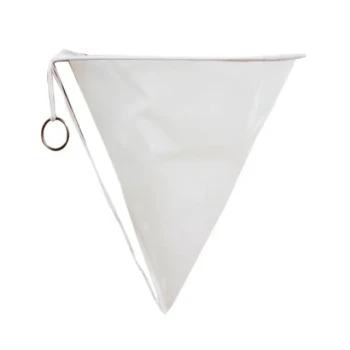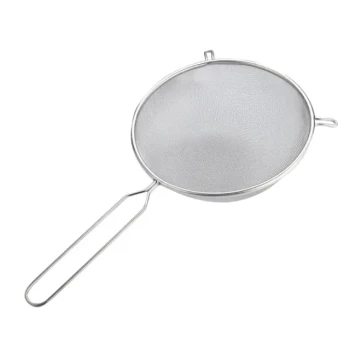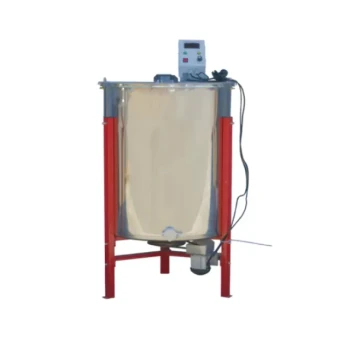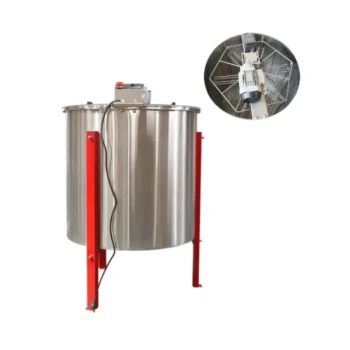At its core, a honey strainer is an essential tool that allows beekeepers to produce clean, high-quality honey efficiently and affordably. It works by physically filtering out impurities like wax cappings, bee parts, and other hive debris that inevitably get mixed in during the extraction process, resulting in a visually appealing and pure final product.
The fundamental challenge in honey processing is separating pure honey from the unavoidable debris of the hive. A honey strainer is the most direct, cost-effective, and straightforward solution for hobbyists and small-scale beekeepers to achieve this critical step.

Why Filtration is a Critical Step
Harvesting honey is an intrusive process that dislodges particles within the hive. Proper filtration is not merely cosmetic; it is a standard practice for producing a quality product.
Preserving Honey Quality and Purity
During extraction, it's impossible to avoid collecting bits of wax, wood from the frames, and other organic matter. A strainer acts as a simple barrier, physically separating these unwanted materials from the liquid honey.
This separation ensures the final product consists of nothing but pure honey, preserving its intended flavor and texture.
Enhancing Visual Appeal
Consumers and enthusiasts expect honey to be clear and clean. Filtering removes the fine particles and debris that can make honey look cloudy or unappealing.
Using a strainer is a simple way to achieve the crystal-clear appearance that signifies a high-quality, professional product.
The Core Advantages of a Honey Strainer
For the vast majority of beekeepers, a dedicated strainer offers the perfect balance of performance, cost, and convenience, making the entire process more manageable and enjoyable.
Simplicity and Ease of Use
A honey strainer is a fundamentally simple tool, typically featuring a mesh screen or cloth. The process is as straightforward as pouring extracted honey through the screen and into a clean container.
This simplicity removes a significant barrier to entry for new beekeepers and reduces the labor-intensive nature of honey processing.
Cost-Effectiveness for Small Operations
Compared to more complex machinery, honey strainers are remarkably affordable. This makes them the ideal choice for hobbyists or small-scale producers who need an effective filtration method without a large capital investment.
Improved Efficiency
By streamlining the filtration process, a strainer saves a considerable amount of time. Manually picking out debris is tedious and impractical, whereas a strainer accomplishes the task quickly as you transfer the honey.
Understanding the Trade-offs and Context
A honey strainer is a specialized tool with a singular purpose. Understanding what it does—and what it doesn't do—is key to managing your entire honey processing workflow.
A Strainer Removes Solids, Not Water
The primary job of a strainer is to remove physical impurities. It does not measure or alter the honey's moisture content.
High moisture content can cause honey to ferment and spoil. To ensure your honey will store properly, you need a different tool called a refractometer, which provides a scientific measurement of water levels.
It's a Foundational Tool, Not an All-in-One Solution
For beekeepers looking to increase productivity, other equipment addresses different challenges. For example, a honey dryer is used to reduce moisture after the harvest, while a honey screw press can help extract honey from the comb, often with some initial filtering built-in.
These are typically used in larger operations. For most, a simple strainer is the correct and most essential tool for filtration.
Making the Right Choice for Your Goal
Your approach to filtration should align with the scale and ambition of your beekeeping.
- If your primary focus is hobby beekeeping: A simple, durable honey strainer is the single most important tool for creating a clean and beautiful product for friends and family.
- If your primary focus is producing high-quality artisan honey: Pair a fine-mesh strainer for exceptional clarity with a refractometer to guarantee optimal moisture content and long-term stability.
- If your primary focus is scaling your production: A basic strainer remains a crucial component, but you may need to investigate more efficient systems for extraction and moisture control to handle larger volumes.
Ultimately, using a honey strainer elevates your craft from simply harvesting honey to producing a truly finished and professional-grade product.
Summary Table:
| Benefit | Description |
|---|---|
| Purity & Quality | Removes wax, bee parts, and debris to preserve honey's natural flavor and texture. |
| Visual Appeal | Creates crystal-clear honey that meets consumer expectations for a professional product. |
| Simplicity & Ease | Straightforward pouring process reduces labor and is ideal for beginners. |
| Cost-Effectiveness | Affordable solution for small operations compared to complex machinery. |
| Improved Efficiency | Saves time by quickly filtering impurities during honey transfer. |
Ready to produce professional-grade honey?
As a trusted supplier for commercial apiaries and beekeeping equipment distributors, HONESTBEE provides durable, high-performance honey strainers and other essential beekeeping supplies. Our wholesale-focused operations ensure you get reliable equipment that streamlines your honey processing, enhances product quality, and supports your growth.
Contact HONESTBEE today to discuss your needs and elevate your beekeeping operation!
Visual Guide
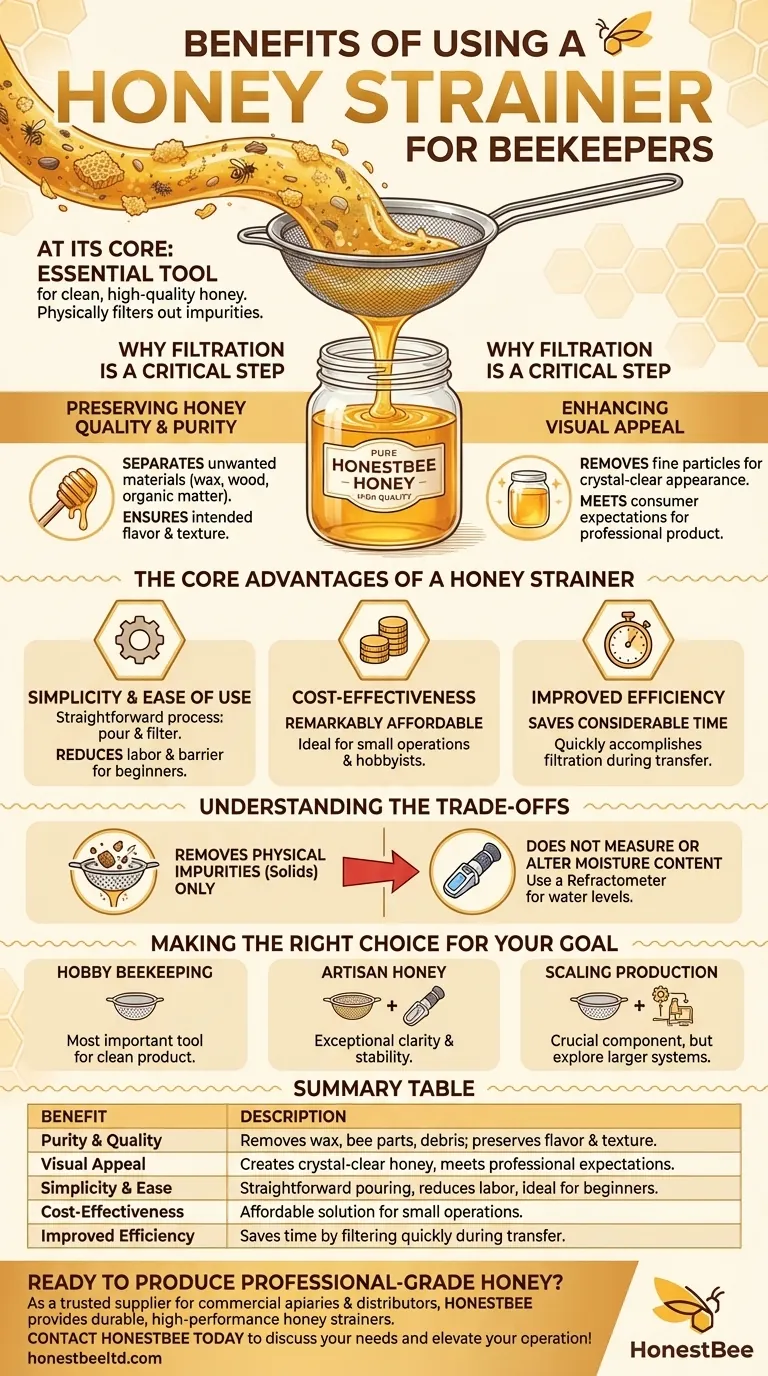
Related Products
- Stainless Steel Triangle Support Honey Strainer and Filters
- Professional Cone-Shaped Honey Filter with Reinforced Steel Ring
- Professional Stainless Steel Honey Filter with Support Handle
- Honey Concentrating and Filtering Dehumidifier Machine 2T Capacity for Honey
- Electric 8 Frame Honey Spinner Extractor Equipment for Beekeeping
People Also Ask
- What are the benefits of using a honey filtering machine? Boost Purity, Efficiency & Market Appeal
- What is the overall importance of using the right equipment in honey filtering? Boost Quality & Marketability
- How should extracted honey be filtered and stored? A Guide to Preserving Quality and Purity
- What methods are used for straining honey? Choose the Right Method for Your Scale
- Why is filtering important in honey processing, and what equipment is used? A Guide to Quality & Efficiency

